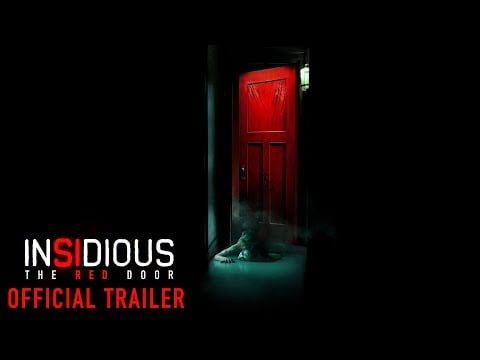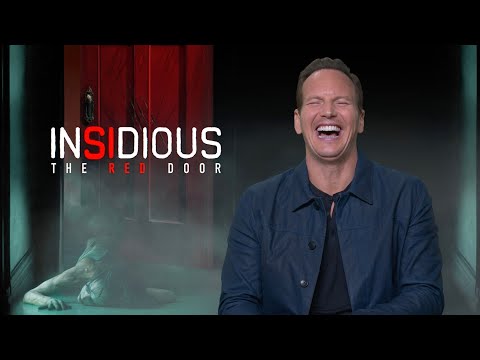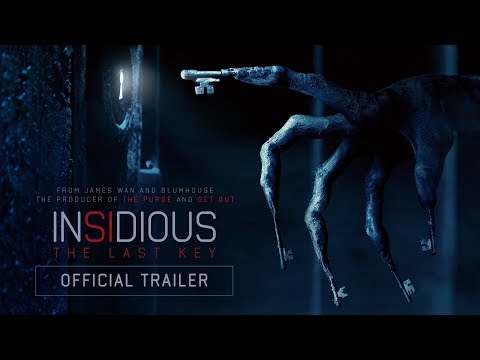Patrick Wilson’s “Insidious: The Red Door” is the fifth installment in the franchise, and an accomplished directorial debut for the veteran stage/film actor and returning series lead.
Wilson was undoubtedly the right artist to take on this assignment, as the series had been working intermittently at best for the past two sequels, which had strayed from the core family unit of the original.
While there are still some problems with this sequel and it likely won’t convert the uninterested, this is the strongest an “Insidious” film has been since the first sequel.
The introduction informs us that the Lambert family unit of the first film, led by Wilson and Rose Byrne as Josh and Renai Lambert, have been put under hypnosis since the events of the second film, to forget years of terrible memories.
How terrible?
They have been haunted by a presence that plagued Josh’s long-suffering childhood, immersed into an alternate supernatural dimension called The Further and Josh, at one point, was demonically possessed and tried to kill his family.
Eight years later, eldest son Dalton, played by Ty Simpkins, is off to college and has a rotten dynamic with his father – what comes across on the surface like a generational gap and an inability to connect emotionally is actually the anguish of longing for the missing memories of their past.
Dalton’s quirky, sympathetic roommate Chris (a scene stealing Sinclair Daniel) comes to his aide, while his art classes inadvertently open up suppressed memories. Eventually, everyone is seeing monsters in the dark.
Wilson directs with an approach that matches the chilling precision of the first two films, though this is far more than just a fine-tuned scare machine (though it is that, too).
The subtext here is rich, as buried father/son regrets and secrets are killing both father and son from within, and a broken family dynamic occurs because the hold a prior set of parents holds over Josh, even in death. As in Ang Lee’s “Hulk” (2003), an unopened door is the key to everything, both keeping the monsters out and making things worse by locking away what must be faced.
It’s not much deeper than that, but the film is always compelling because of the real and relatable issues it brings up.
If one were to edit all of the supernatural scenes out of this, it would still work as a film about a broken family unit struggling to reconnect with what they’ve lost. If I didn’t care about any of these characters, this wouldn’t have worked, but the intensity of the performances works with the inventiveness of the production.
Originality has never been the strong suit of the “Insidious” franchise and a quality the films have had to overcome. I saw the first “Insidious” when it was the second bill on a double feature at the Mesa Drive-In at Pueblo, Colorado; the first movie showing was the premiere of the hit and mostly miss “Scream 4,” followed by “Insidious,” which cribbed a great deal from “Poltergeist” (1982) but still managed to terrify me.
FAST FACT: The First “Insidious” earned $ 54 million in 2010. “Insidious: The Last Key,” the fourth film in the saga, brought in $ 67 million in 2018.
It was so effective, I saw it again the next day with a friend and gleefully watched him jump out of his seat as often as I did the night before (I’m not usually this sadistic to my friends, and we’ve since laughed about the experience).
The following “Insidious: Chapter Two” (2013) also borrowed as great deal from another well-known source (in this case, “The Shining”) but, to my delight, evoked memories of Herk Harvey’s “Carnival of Souls” (1962) and managed to be even more clever and scarier than its predecessor.
The subsequent entries, “Insidious: Chapter 3” (2015) and “Insidious: The Last Key” (2018) had their moments, though I can recall the scariest parts far better than any of the characters or narratives.
The third and fourth entries of the series leaned in the direction of the supporting ghostbuster characters, led by the always wonderful Lin Shaye. The overuse of comic relief and sentiment didn’t help (and, tellingly, is used sparingly here).
“Insidious” represents a valuable contribution to the American horror film genre, which had, at one point, become overrun with lame PG-13 teen horror movie remakes/slashers and “torture porn” grimace inducers, like the “Hostel” series.
While horror fans can undoubtedly name scarier movies than “Insidious,” the franchise, as well as the subsequent “The Conjuring,” “Annabelle” and “It” movies, place an emphasis on mood, suspense, and genuine scares, as opposed to gore and gross-outs, as well as character and story.
Most mainstream horror movies don’t care enough to be examples of great filmmaking. Wilson’s film is a B-movie ghost story in the best way; “The Red Door” isn’t a home run like Mike Flanagan’s “Doctor Sleep” (2019) or “Ouija: Origin of Evil” (2016) but it’s close.
A character mentions the use of “negative space” in art, a telling choice, since here is a horror film that uses this technique as a master class. We’re watching scenes intently, as we can tell the pace has slowed, the music grows quiet, and the stillness is inevitably going to be interrupted by a blast of a scary image or (the lazier choice) the score raising its volume.
An early scene where Josh sits alone in his car, unaware of a presence that slowly manifests in the distance, is wonderful. So is a bit with pictures taped to a window that provide a peek-a-boo effect and a petrifying scene where Josh has an MRI.
In our exclusive interview, the horror powerhouses talk sequels, storytelling and the return of a certain lipstick-faced fiend… https://t.co/Tiw9ofoP9N
— FANGORIA (@FANGORIA) June 30, 2023
Less effective is a moment where someone recalls that Josh once chased his family with a baseball bat: it’s a blatant reference to “The Shining” and jarring enough that the line should have been axed.
Also, this is among the few American films that, rather than celebrate the stupidity of grotesque college frat boy behavior, spoofs it in a welcome, unexpected touch.
If this is the final entry (and the conclusive feeling of wrapping things up at the end indicates that it is), the series is going out on a compelling note. The best of the series remains “Insidious: Chapter Two,” with its formidable villain and jolting imagery; parts 3 and 4 are never referenced here and that’s fine, as this nicely connects itself to the first and best entries (and even does some “Back to the Future Part II”-style sequel hopping).
While the “Insidious” series is only 13 years old, “The Red Door” isn’t a nostalgia inducer or a money grab. It’s a proper dramatic extension of the core focus of the first two films. If you like these movies, then you’ll enjoy how much Wilson invests in these characters and in really scaring us.
Three Stars
The post ‘Insidious: The Red Door’: A Superior Horror Sequel first appeared on Hollywood in Toto.
The post ‘Insidious: The Red Door’: A Superior Horror Sequel appeared first on Hollywood in Toto.


